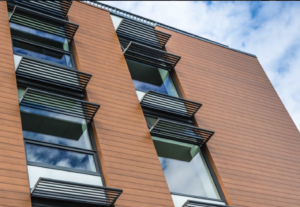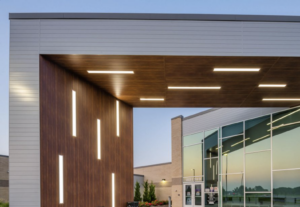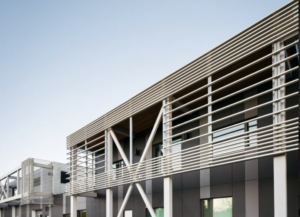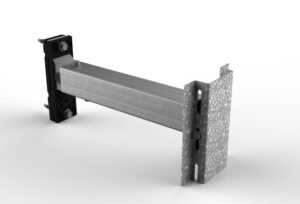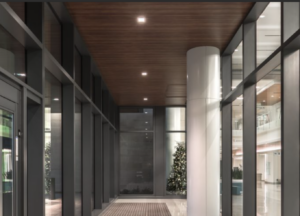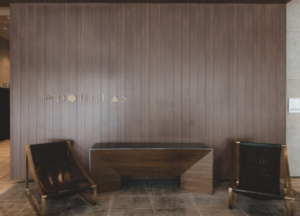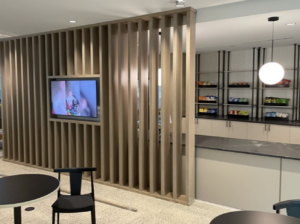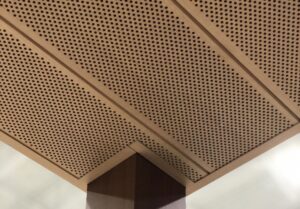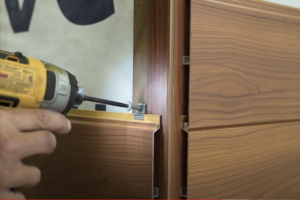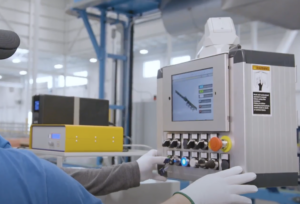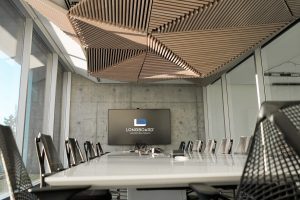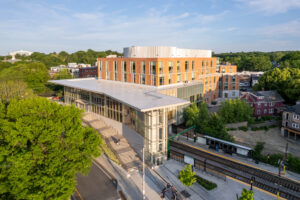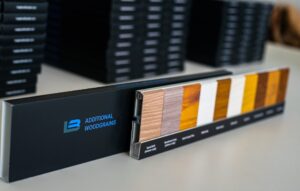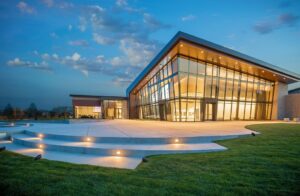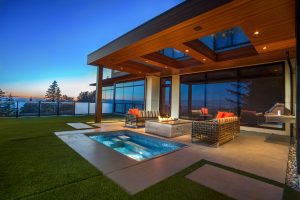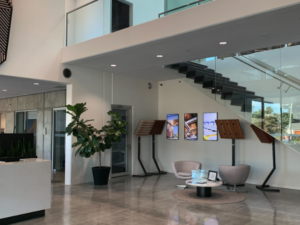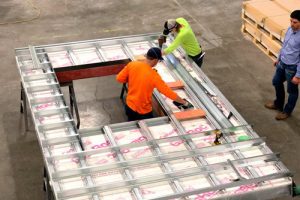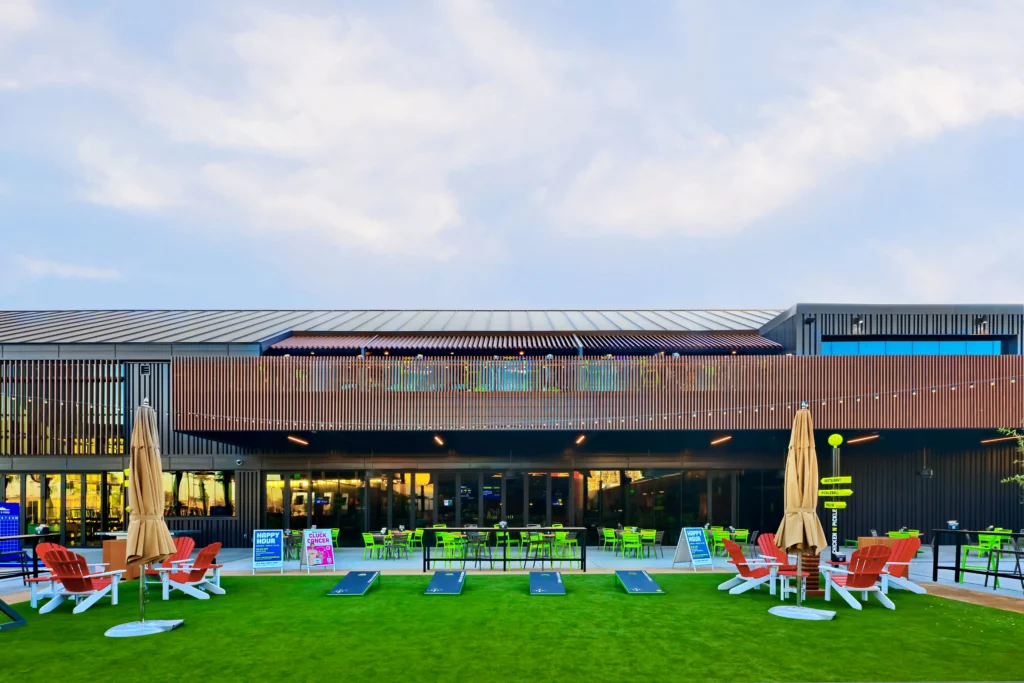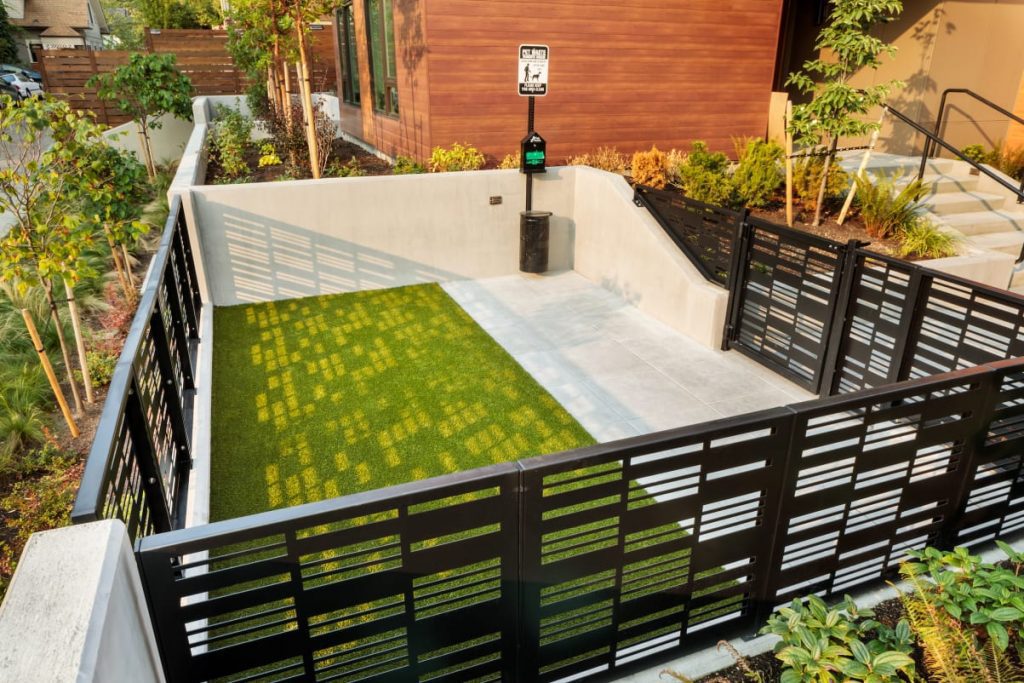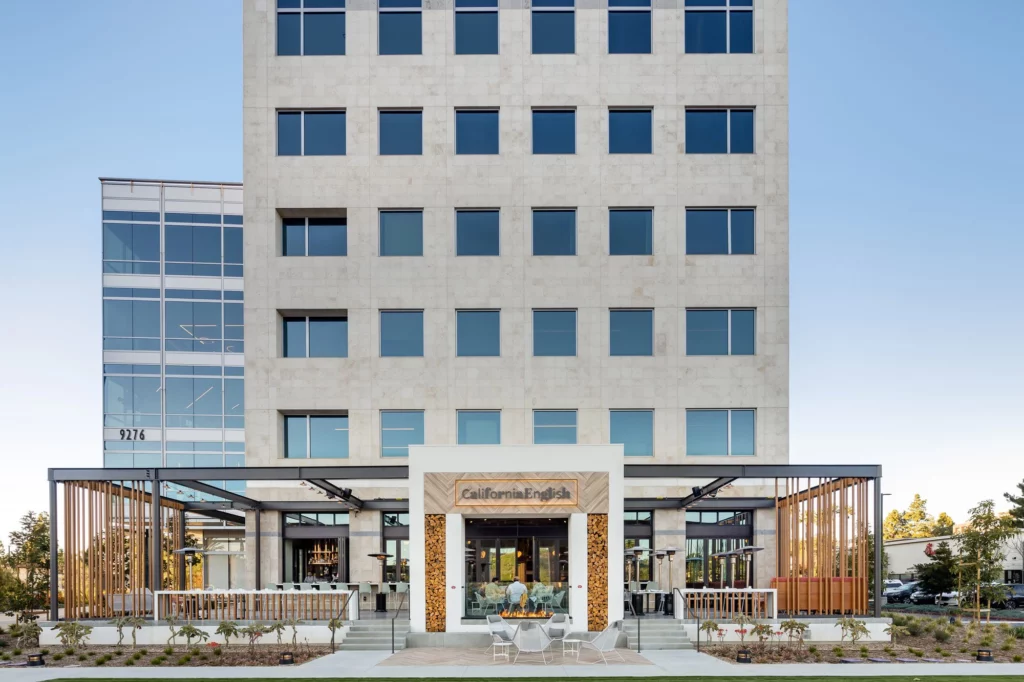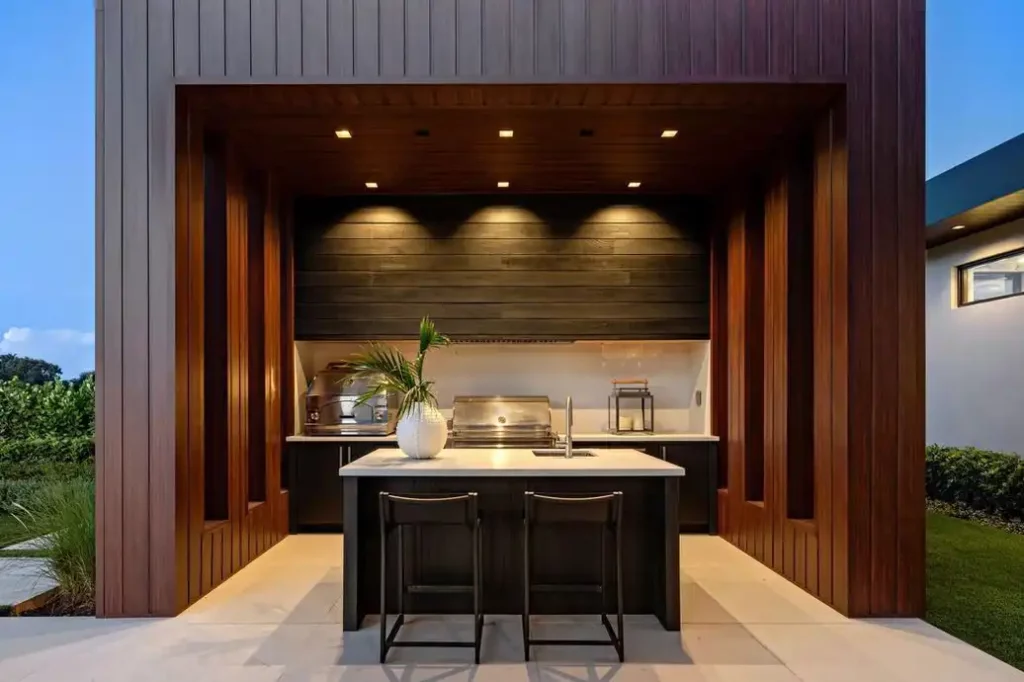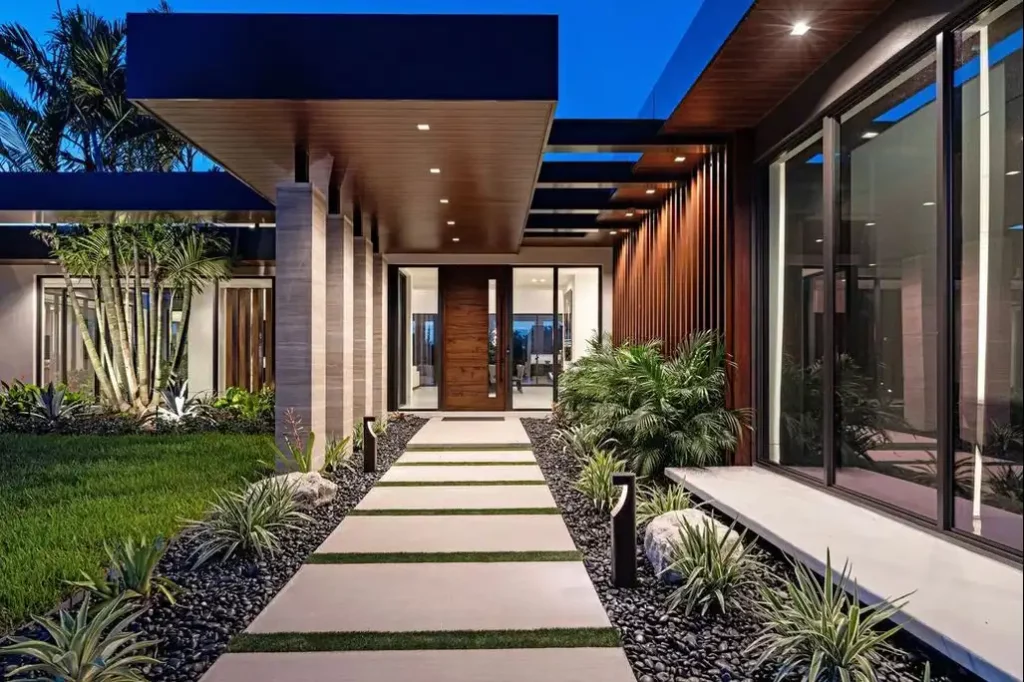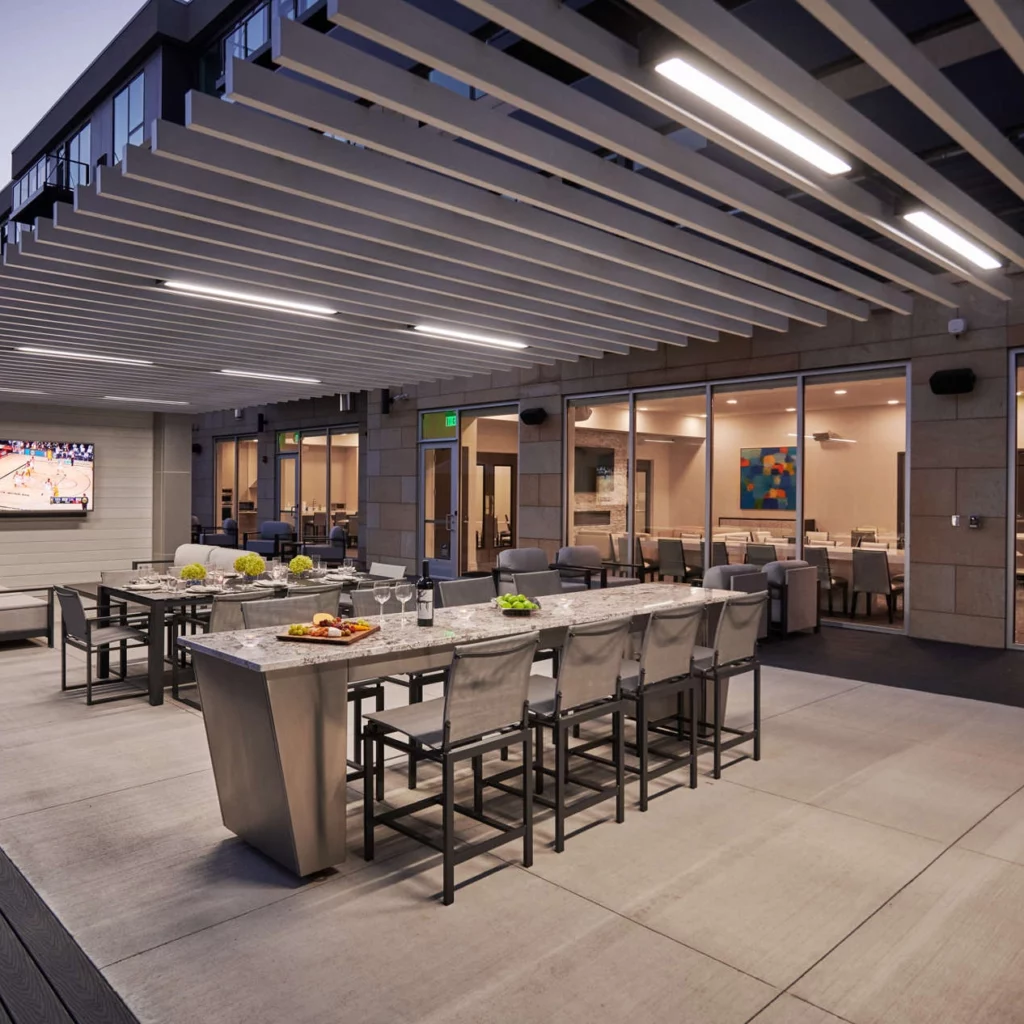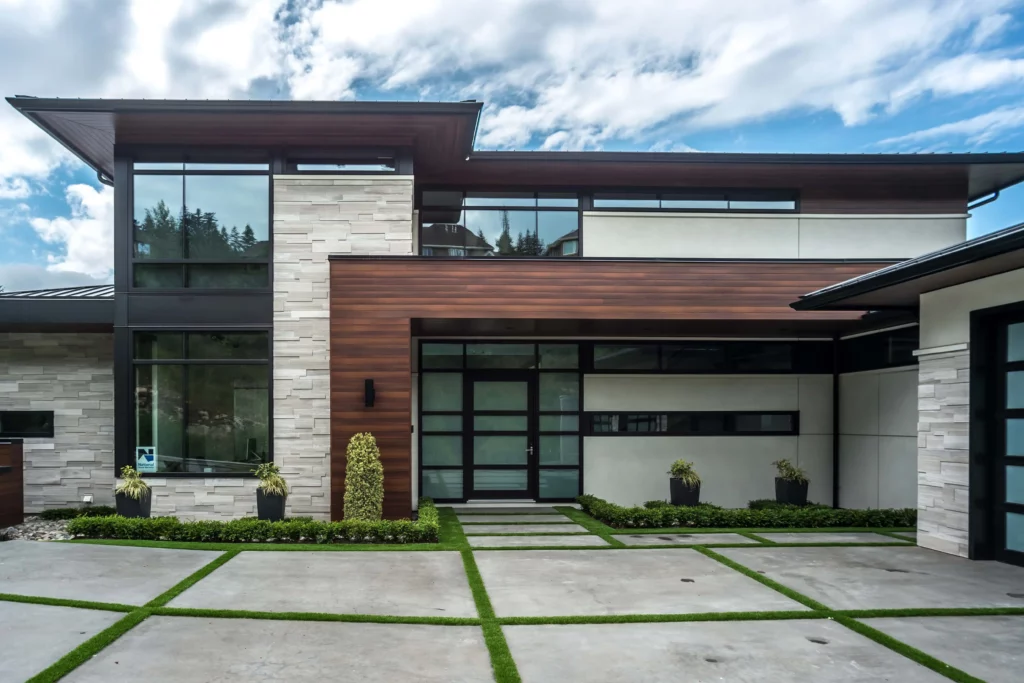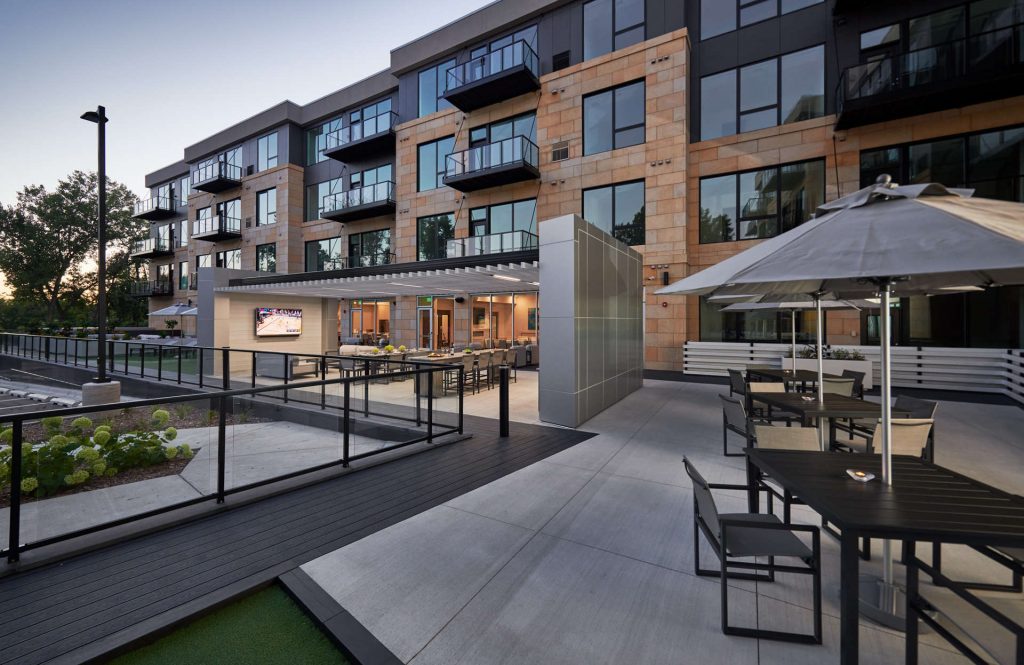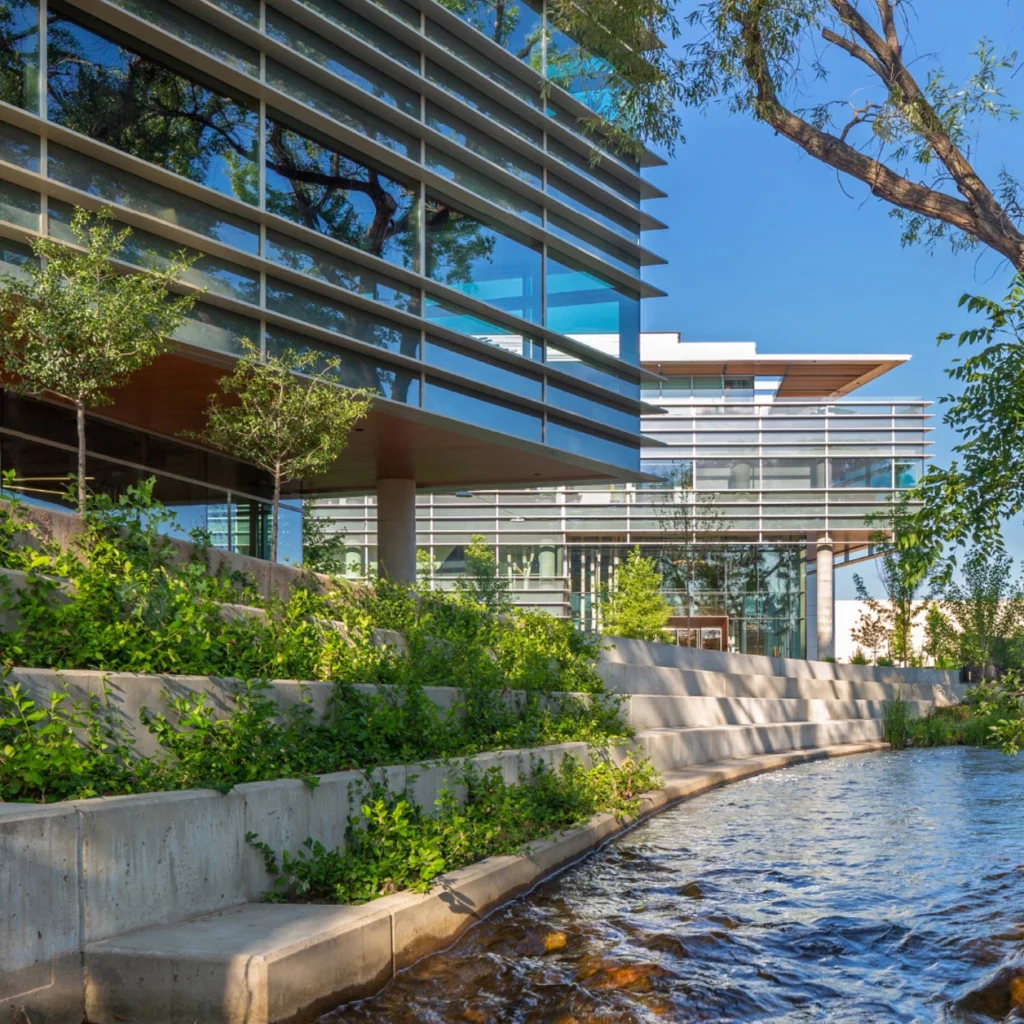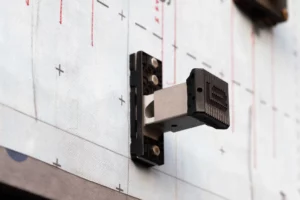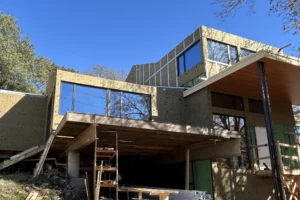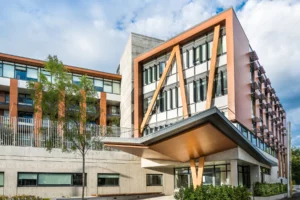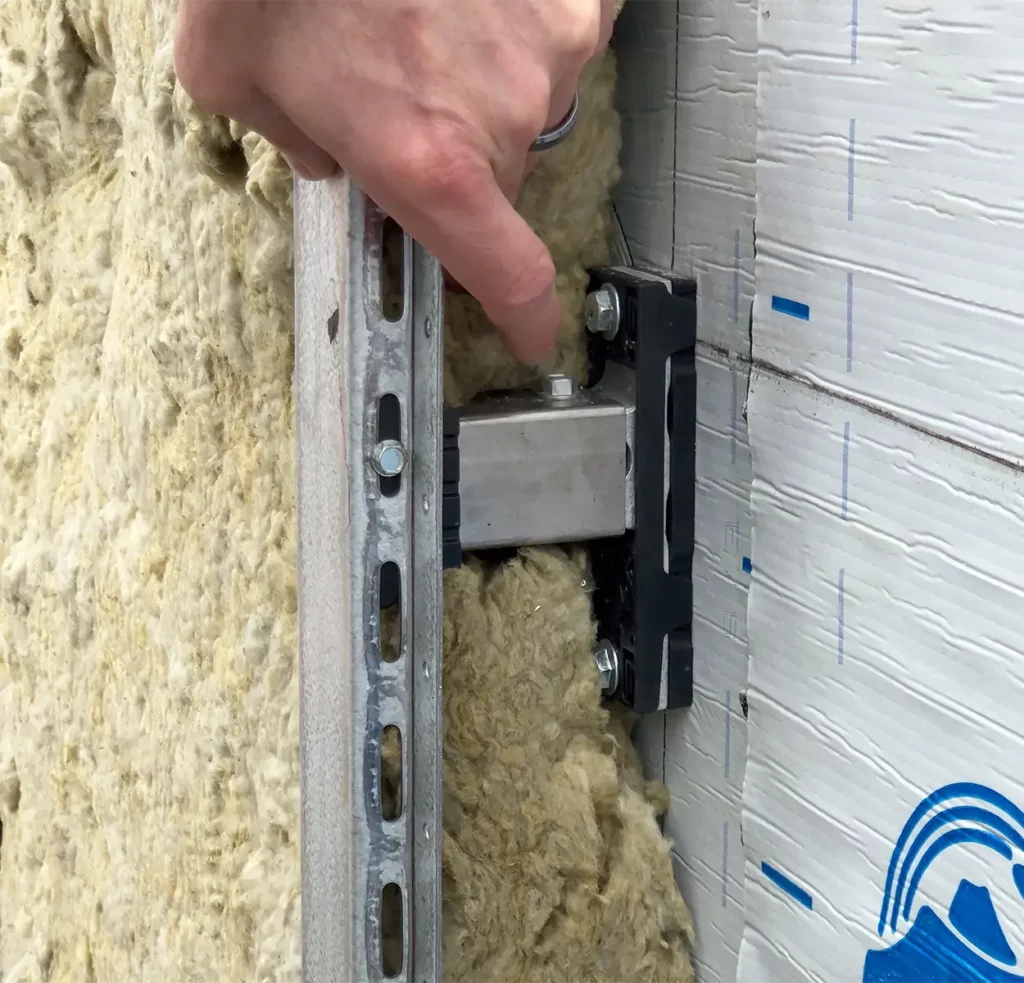Content Type:
Trends
Project Type:
Corporate & Commerical, Education, Healthcare, Hotel/Hospitality, Industrial/Warehouse, Multifamily
System Name:
Link & Lock™, Privacy Beam, Siding, T&G Planks
Installation:
Exterior
Outdoor spaces have never been more vital, and their importance only continues to grow. As awareness of biophilic design rises, so does the demand for well-crafted, eco-friendly, and visually appealing environments—whether patios, commercial plazas, or civic parks. In response, the architecture and construction fields face increasing pressure to develop designs that balance durability with aesthetics. This article explores 10 key elements of outdoor space design that emphasize both beauty and long-term performance.
On This Page ▶
- Material Selection: Balancing Aesthetics with Durability
- Climate-Responsive Design Principles
- Integrating Hardscape and Landscape Elements
- Sustainable Practices
- Intentional Lighting Design
- Furniture and Accessory Selection
- Longevity Through Maintenance Planning
- Accessibility Considerations
- Future Trends in Outdoor Design
- The Art and Science of Sustainable Outdoor Design
Material Selection: Balancing Aesthetics with Durability
Selecting materials that offer both beauty and endurance is fundamental to outdoor design. Natural stone, such as granite and limestone, provides timeless elegance and withstands harsh climates, making it a popular choice for patios and walkways. Composite decking, a blend of wood fibers and recycled plastic, offers the look of natural wood without the maintenance concerns, resisting moisture, rot, and insect damage.
Different environments demand different materials. Coastal regions require corrosion-resistant metals like powder-coated aluminum and weather-resistant wood species such as ipe or teak, which can endure high humidity and salt exposure. In mountain regions, where freeze-thaw cycles are common, porcelain pavers and frost-resistant stone perform exceptionally well, resisting cracking and erosion over time. In high-traffic urban environments, precast concrete and reinforced pavers provide durability while maintaining a sleek, modern aesthetic.
Finishing Processes and Longevity
Powder-coated aluminum is an excellent choice for outdoor structures, furniture, and architectural features due to its lightweight yet highly durable properties. It resists rust and corrosion, making it ideal for regions with high humidity or coastal exposure where salt air can rapidly degrade untreated metals.

There are many ways aluminum is fabricated into products. Lets take a look at the two most popular: roll-formed and extruded aluminum. Roll-formed aluminum is thinner and more flexible, making it suitable for lightweight applications like decorative panels or pergolas. However, it lacks durability and can succumb to denting and warping in commercial environments. Extruded aluminum, on the other hand, is created by forcing heated aluminum through a die, resulting in a thicker, more robust material. This makes it the preferred choice for outdoor applications such as cladding, post wraps, decorative screens and much more.
Finishing Processes and Longevity
The finishing process greatly impacts the longevity and visual appeal of aluminum. While powder coating is the most common finish, there are several advanced techniques to consider:
- Standard Powder Coating: This process involves electrostatically applying a dry powder to aluminum, which is then cured under heat to form a protective layer. It provides excellent UV resistance, preventing fading or chalking over time.
- Sublimation Finishing: This method infuses patterns, such as wood grains or stone textures, into the powder-coated surface. It is often used for aluminum that needs to mimic organic materials while retaining its weather-resistant benefits
- Anodizing: Unlike powder coating, anodizing alters the surface at a molecular level, increasing scratch resistance and enhancing corrosion protection. However, it lacks the variety of colors and finishes offered by powder coating.
Industry Standards and Certifications
To ensure aluminum finishes meet high-performance standards, designers and architects should look for third-party certifications such as the AAMA (American Architectural Manufacturers Association) 2604 & 2605 standard. These certifications guarantee superior color retention, weather resistance, and durability under extreme conditions. While AAMA 2603 coatings are suitable for mild climates, AAMA 2604 & 2605 coatings are recommended for outdoor furniture, railings, and metal facades exposed to intense sunlight, high humidity, or corrosive environments.
A great example of how these standards are applied can be seen at the Alberni Tower, where the Kigumi cloud seamlessly flows from the condo’s entrance into the amenity pool. Indoor pools, in particular, require exceptionally durable materials due to the continuous humidity and chemicals create a harsh environment.
Climate-Responsive Design Principles
A climate-responsive design ensures outdoor spaces remain functional and inviting year-round. In hot climates, shade structures such as pergolas, trellises, and retractable awnings reduce direct sun exposure, enhancing comfort while also protecting furniture and flooring materials from UV damage. In areas with heavy rainfall, well-designed drainage solutions, including sloped surfaces, permeable pavers, and bioswales, prevent water accumulation and erosion, maintaining the integrity of walkways and gathering spaces.
Windy environments require strategic placement of windbreaks, such as dense plantings, lattice walls, or glass panels, to create a more comfortable and usable space. Designers working in arid climates often incorporate xeriscaping, using drought-resistant plants, gravel beds, and efficient irrigation systems to create low-maintenance, sustainable landscapes.
Integrating Hardscape and Landscape Elements
Successful outdoor spaces strike a balance between hardscape structures and natural elements. Thoughtful design considers proportion, material selection, and the seamless integration of green space. Walkways and patios should follow organic curves rather than rigid geometric lines, blending into the natural surroundings. Using a mix of textures—such as rough-hewn stone against soft grasses—creates depth and contrast, enhancing the sensory experience.
One strategy is to use layered planting, incorporating a mix of ground cover, shrubs, and trees to create visual interest and define space. Vertical gardens and living walls can soften large architectural elements while also providing ecological benefits such as air purification and insulation.
Example: Chicago’s Millennium Park integrates hardscape features like fountains and promenades with extensive plantings, creating an immersive urban green space that feels both structured and natural.
Sustainable Practices
Sustainability is a cornerstone of long-lasting outdoor design. Permeable surfaces, such as gravel, permeable pavers, and reinforced grass paving, allow rainwater to infiltrate the ground, reducing runoff and erosion. Rainwater harvesting systems collect and store water for irrigation, lowering water consumption and providing a self-sustaining landscape.
Native plantings are essential for sustainability, requiring less irrigation and providing habitat for local wildlife. These selections also reduce maintenance needs and enhance biodiversity. Green roofs and living walls further promote sustainability, insulating buildings while improving air quality.
Budget Consideration: While sustainable choices may have higher upfront costs, they lead to long-term savings in maintenance and utility expenses. For example, premium teak furniture may cost 30% more than acacia but lasts over 20 years, whereas acacia often requires replacement within 8-10 years.
Intentional Lighting Design
Lighting is a crucial element of outdoor design, serving both aesthetic and functional purposes. A well-planned lighting scheme employs ambient lighting (such as lanterns and string lights), task lighting (pathway illumination), and accent lighting (highlighting trees, sculptures, or water features) to create depth and drama.
Advancements in smart lighting allow designers to incorporate app-controlled LED systems that adjust brightness and color temperature based on the time of day or weather conditions. Solar-powered fixtures provide an energy-efficient alternative, reducing long-term operational costs.
Furniture and Accessory Selection
Outdoor furniture must be durable enough to withstand weather exposure while complementing the overall aesthetic. Teak and acacia are popular wood choices due to their natural resistance to moisture and decay. Powder-coated aluminum and stainless steel offer modern, rust-resistant alternatives, while HDPE (high-density polyethylene) wicker provides the look of traditional woven materials with enhanced longevity.
Fabrics should be UV-resistant and quick-drying to prevent mold and fading. Modular furniture allows flexibility, adapting to different functions and seasonal needs.
Longevity Through Maintenance Planning
A well-maintained space retains its beauty and functionality for years. Regular cleaning, seasonal inspections, and protective treatments are key to longevity. Wood should be resealed every one to two years, metal fixtures checked for corrosion, and stone surfaces periodically cleaned and sealed.
Accessibility Considerations
Ensuring outdoor spaces are accessible to all users is critical in modern design. Wide, slip-resistant pathways help accommodate wheelchairs and strollers, while strategically placed ramps and handrails improve safety and usability. Adjustable-height seating and raised garden beds allow individuals with mobility challenges to engage with outdoor features comfortably. Incorporating tactile paving and well-lit pathways further enhances accessibility for individuals with visual impairments.
Common Problems & Solutions
- Drainage Issues: Raised pavers and French drains help prevent standing water and reduce erosion.
- Material Failures: Use climate-appropriate materials to prevent cracking, warping, or corrosion.
- Plant Diseases: Opt for disease-resistant plant varieties and ensure proper spacing for airflow to reduce fungal growth.
- UV Damage: Choose fade-resistant fabrics and apply UV-protective coatings to wood and metal surfaces.
- Pest Infestation: Integrate natural pest deterrents like lavender and marigolds, and regularly inspect furniture for insect activity.
Future Trends in Outdoor Design
Emerging trends in outdoor design emphasize resilience and technology. Smart irrigation systems use weather data to optimize water usage, while self-healing concrete repairs minor cracks autonomously. 3D-printed hardscape elements reduce material waste and allow for custom, cost-effective designs. New materials, such as bio-based composites and recycled plastic lumber, offer sustainable, durable alternatives to traditional options.
The Art and Science of Sustainable Outdoor Design
Designing outdoor spaces that are both beautiful and durable requires a holistic approach that integrates material selection, climate adaptability, sustainability, and maintenance planning. By considering regional needs, budget constraints, and emerging technologies, designers can create spaces that stand the test of time. A well-designed outdoor environment is more than just a visual asset—it is a space that invites engagement, promotes sustainability, and offers long-term value to users and clients alike.

